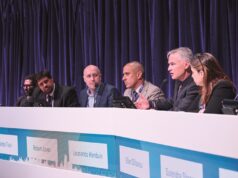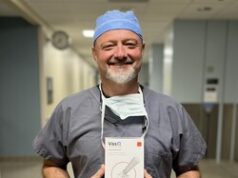
TVA Medical has announced the online publication of positive results from the Novel Endovascular Access Trial (NEAT) evaluating its everlinQ endoAVF system. The 12-month data published online in the American Journal of Kidney Diseases (AJKD) demonstrate the potential benefit of the novel approach to create haemodialysis access as an alternative to traditional open surgery.
The everlinq endoAVF system is designed to create an arteriovenous fistula (AVF) for haemodialysis access in an endovascular procedure using catheter-delivered radiofrequency energy.
The article explains that 80 patients were enrolled (20 roll-in and 60 participants in the full analysis set; the latter are reported). Endovenous AVFs were created in 98% of participants; 8% had a serious procedure-related adverse event (2% of which were device-related). Eighty-seven per cent were physiologically suitable for dialysis (eg. mean brachial artery flow, 918 mL/min; endovenous AVF vein diameter 5.2mm [cephalic vein]). Endovenous AVF functional usability was 64% in participants who received dialysis. Twelve-month primary and cumulative patencies were 69% and 84%, respectively.
“The NEAT results show that the everlinQ endovascular approach can produce fistulae for haemodialysis, with an acceptable safety profile,” said NEAT principal investigator Charmaine E Lok, medical director of the haemodialysis programme at the University Health Network-Toronto General Hospital and senior scientist at the Toronto General Hospital Research Institute in Toronto, Canada. “This unique approach offers clinicians and chronic kidney disease patients another option for fistula creation that is minimally invasive.”
The NEAT study is a single-arm, prospective, multicentre study conducted at nine sites in Canada, Australia and New Zealand. The study measured safety, efficacy (defined as endovenous AVF physiologically suitable for dialysis within three months), functional usability of the endovenous AVF to provide dialysis with two-needle cannulation, and primary and secondary patencies.
Each year approximately three million people worldwide with ESRD are treated with haemodialysis. However, the first step, creating a viable access in the arm, is often a clinical challenge.
In addition, an article published this spring in The Journal of Vascular Access showed that patients who received an endovenous AVF in the NEAT study required fewer post-endovenous AVF interventions, with a potential first-year medical cost savings per patient of US$11,240, compared to patients who received a surgical AVF. The propensity score-matched comparison to surgical AVF was calculated using a 5% random sample from Medicare Standard Analytical Files.










